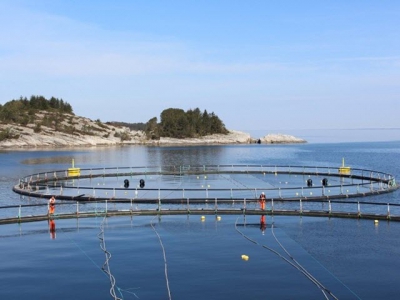Netting more profit from aquaculture by-products: who wins?

Research funded by IFFO, the marine ingredients organization, finds that better management of aquaculture by-products could maximize “human edible yield”, but where would this leave the feed industry?
Researchers from the University of Stirling’s Institute of Aquaculture and University of Massachusetts have reported that the Scottish salmon industry could increase by-product revenue by over 800% - £23.7m - ($32.7m) through strategic use of by-products.
Using the Scottish salmon farming industry as a case study, the IFFO-funded research investigated how value could be added to aquaculture through optimized utilization of by-products, by maximizing edible yields and through better separation at the processing stage.
In 2015, food for human consumption accounted for just 15% of total by-product utilization; animal feed represented 75% and fuel and fertilizer production mopped up the remaining 10%. No by-products ended up in landfill.
Whilst the authors acknowledged that total utilization of by-products could be seen as positive resource use, they said that according to the ‘Food Recovery Hierarchy’, the best use of fish by-products would be to “retain and add value as food or food ingredients”.
By-products undervalued
“The majority of by-products were downgraded from human grade to category 3 animal by-products and used as raw material for non-edible products…This study suggests that there exists a greater financial opportunity to use these raw materials in the production of value-added goods for human consumption,” wrote the researchers.
Examples of by-products that are currently being downgraded but that could be redirected for human consumption are products such as trimmings, heads belly flaps and fins. Whilst there is no consumer market in Europe for some of these products, they are in high demand in some Asian and African countries. In Japan and Taiwan, for instance, belly flaps of salmon are considered a delicacy.
The researchers suggested that with infrastructure improvements, by-product types could be sorted, graded, stored, transported and used “strategically” - at present many by-product processors mix products and send them to local rendering and hydrolysate facilities for use in animal feed.
“The results suggest processors could more than double the value of their by-products if they did not mix them, and instead sold them as the component parts: trimmings, heads, frames, viscera, skins and belly flaps.”
The ability to derive more value from the same output is clearly an attractive prospect for the salmon industry, but from a feed industry perspective, it begs the question as to whether redirecting by-products away from animal feed and towards human foods would lead to shortages and higher costs.
Opportunities for feed and food
However, lead author Julien Stevens told FeedNavigator he didn’t think this would be a problem - that it was more a case of “specialization” of by-products and untapped opportunities for their use - whether as feed or food.
“The short answer is that there would probably be some adjustment, but there is huge potential for more products, including feed ingredients, from seafood by-products in the global aquaculture and fisheries industries, as we're only scraping the tip of the iceberg at the moment,” he said.
He also pointed out that adding value to the ‘fifth quarter’ (processing by-products) had been commonplace for years in the terrestrial livestock industry and that, in comparison, the seafood sector had been slow to reduce its discards.
“Terrestrial livestock has for millennia benefited from the use of the ‘fifth quarter' in order to produce more food, and more value for their farm raised stock. Processing is a business with very slim margins and consumers are constantly searching for good quality yet affordable food, so it is only natural that aquaculture will move in the direction of generating more value from their by-products,” he said.
This ‘value-added’ approach to salmon by-products has already taken root in some markets. The researchers cited Norway as one of the earliest countries to recognize seafood by-products as a resource.
“Norway has developed streamlined modern processing facilities to manage over 650,000 metric tons of seafood by-products each year and the Norwegian Atlantic salmon industry utilizes around 90% of its by-products,” wrote the researchers.
Source: Marine Policy 90 (2018) 115-1224
Authors: J R. Stevens, R. W. Newton, M. Tlusty, D. C. Little
Có thể bạn quan tâm
 Agro-forestry-fishery exports still have room to grow: minister
Agro-forestry-fishery exports still have room to grow: minister Although challenges lie ahead, there remains room for agro-forestry-fishery exports to increase in 2020
 Fisheries sector to focus on standardising production for higher value
Fisheries sector to focus on standardising production for higher value The fisheries sector in 2020 will focus on granting certification to brackish shrimp farms (tiger shrimp and white-leg shrimp), tra fish farms and aquaculture
 Catfish exports fall, VN farmers and exporters suffer
Catfish exports fall, VN farmers and exporters suffer Vietnam’s catfish exports have seen a sharp decline because of trade barriers and price fluctuations in the world market.
 Kiên Giang - Build a shrimp farm free from diseases
Kiên Giang - Build a shrimp farm free from diseases Kiên Giang sets goal of 85,000 tons in production of farmed shrimp from 120,000 hectares of farm to supply the seafood process and exports.
 Project helps Soc Trang sustainably exploit fisheries resources
Project helps Soc Trang sustainably exploit fisheries resources The incomes of people living in coastal areas in the Mekong Delta province of Soc Trang have improved under the coastal resources for sustainable development